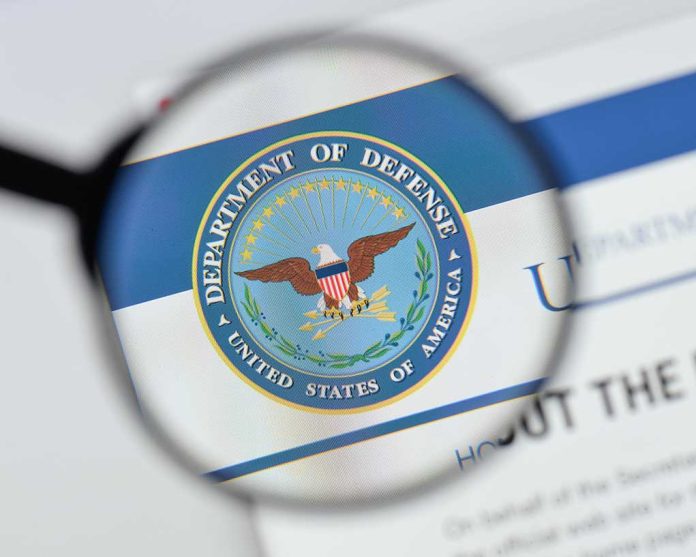
At a Glance
- U.S. Defense Secretary Lloyd Austin orders increased military defensive posture in the Middle East
- Pentagon deploys advanced fighter jets, including F-22 Raptors and F-35Cs
- USS Abraham Lincoln aircraft carrier accelerated to the region
- Additional air defense systems and military units placed on high alert
- Move comes in response to escalating threats from Iran and its proxies
U.S. Military Flexes Its Muscles
In a show of force aimed at deterring Iranian aggression, the Pentagon has announced a significant increase in U.S. military capabilities across the Middle East. This strategic move includes the deployment of state-of-the-art fighter jets, naval assets, and enhanced air defense systems. The decision comes as Iran and its proxies continue to threaten American interests and allies in the region, particularly Israel.
At the forefront of this military surge are approximately a dozen F-22 Raptors, the Air Force’s most advanced stealth fighters. These fifth-generation aircraft, along with F/A-18s from the USS Theodore Roosevelt, have already arrived in the region, significantly boosting America’s air superiority capabilities. The USS Abraham Lincoln aircraft carrier strike group is also being fast-tracked to the area, bringing with it a complement of Marine Corps F-35C fighters.
A Multi-Faceted Approach to Regional Security
The U.S. military’s enhanced presence in the Middle East extends beyond air power. The Ohio-class submarine USS Georgia, armed with over 150 Tomahawk cruise missiles, has been ordered to the U.S. Central Command area of responsibility. This formidable vessel adds a potent layer of deterrence and strike capability to the American arsenal in the region.
To support the increased number of fighter aircraft in the region, the Air Force has also bolstered its aerial refueling capabilities. KC-135 tankers from various Air National Guard, Air Force Reserve Command, and Active-duty units have been deployed, ensuring that America’s fighters can maintain extended operations if necessary.
Protecting American Interests and Allies
The decision to strengthen the U.S. military posture in the Middle East comes in the wake of recent attacks on American troops in Iraq and Syria. With 2,500 U.S. personnel in Iraq and 900 in Syria, ensuring their safety is paramount. The latest attack in Syria on August 9 resulted in injuries to American service members, underscoring the volatile nature of the region.
While the primary goal of this military buildup is deterrence, the Pentagon has made it clear that the United States is prepared to respond decisively to any aggression. The deployment of additional Navy cruisers and destroyers further reinforces America’s commitment to maintaining stability in this critical region.
A Delicate Balance: Deterrence and Diplomacy
As the U.S. flexes its military muscle, it’s important to note that these actions are part of a broader strategy aimed at de-escalation. The Biden administration continues to push for diplomatic solutions, including efforts to broker a ceasefire between Israel and Hamas. However, the enhanced military presence serves as a clear warning to Iran and its proxies that any hostile actions will be met with overwhelming force.
With approximately 30,000 U.S. troops deployed across the U.S. Central Command area of responsibility, America’s commitment to regional security remains unwavering. As tensions continue to simmer, the world watches closely to see whether this show of force will help stabilize the volatile Middle East or lead to further escalation.
Sources:
From Fighters to Tankers, US Military Flexes Airpower in Middle East as Iran Threatens Israel
US bolsters military presence in Middle East as threat of regional escalation intensifies
U.S. Will Send More Defensive Military Capabilities to Middle East
Exclusive: Top U.S. general makes unannounced Middle East trip as Iran threat looms
How US Surged Forces to Middle East To Keep Iran at Bay
U.S. Troops in the Middle East: Mapping the Military Presence
As Tensions Simmer in the Middle East, Pentagon Redirects Carrier Strike Group to the Area
More US troops, equipment headed to Middle East amid Iranian threats













